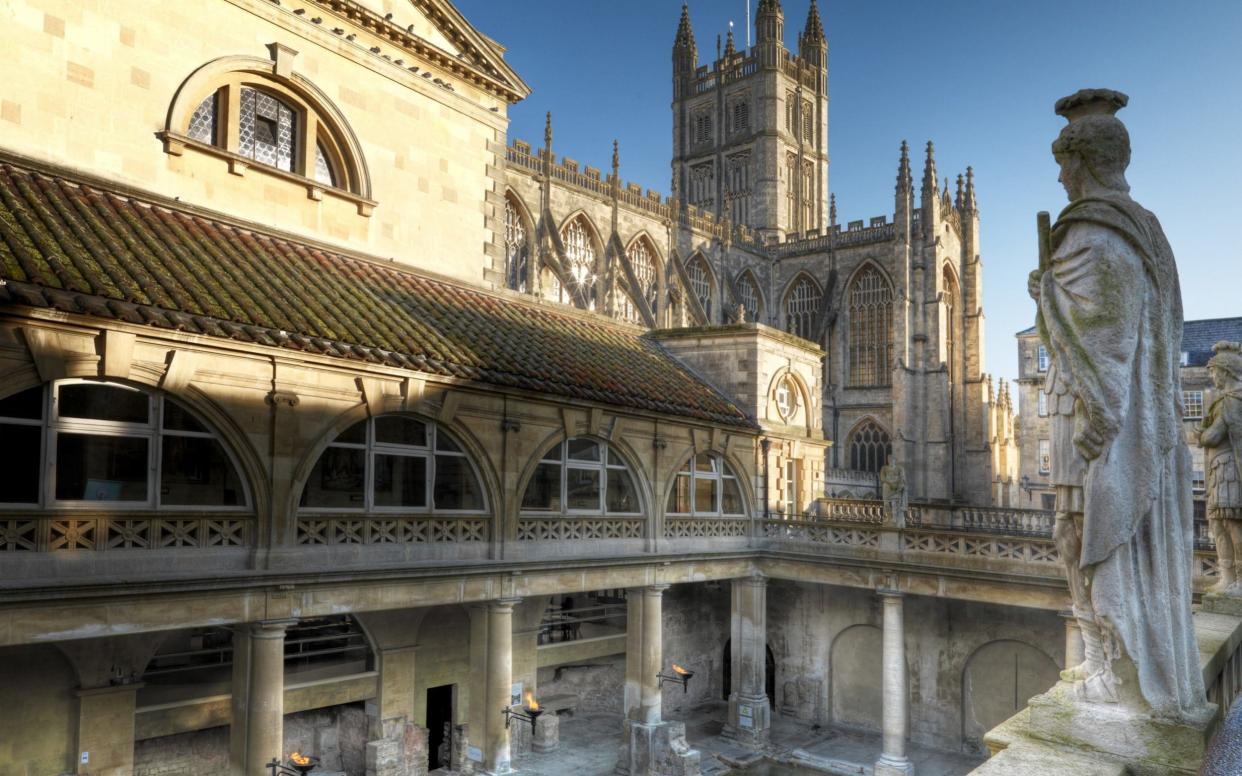Bath Abbey to be heated by the hot springs of the Roman baths

First it was the Celts, who worshipped at the waters bubbling up from beneath the surface of the earth, then the Romans, who created a complex of baths and steam rooms to harness the power of the sacred springs.
Now 21st century engineers are to use the water from the same hot springs beneath the city of Bath to heat its medieval abbey.
Builders will shortly begin work on an underfloor heating system using the waters from the springs which supply the historic Roman baths.
As part of the £19.3 million project heat exchangers will be installed in the Great Roman Drain running beneath the city’s streets - through which 250,000 gallons of hot water flow from the Sacred Spring beneath the baths to the River Avon each day - to capture the heat and direct it to the abbey.
The scheme, being funded by the Heritage Lottery Fund, envisages 1.5 megawatts of continuous energy being produced, enough to heat the church and surrounding buildings, as well as the Romans Baths and Pump Room complex itself.
Charles Curnock, director of Bath Abbey’s Footprints project, said on Wednesday: “This has really captured the public’s imagination - it’s an innovative project potentially using Bath’s famous hot springs to harness natural energy in order to heat two of Bath’s famous landmarks.”

The new system would allow the abbey to replace the creaking Victorian pipes and gas fired heating system currently keeping worshipers and visitors warm.
During building work archaeologists will be on hand to ensure any artifacts that are uncovered are recorded and preserved.
The project got the go-ahead after Bath and North East Somerset Council granted the abbey authorities a lease of rights to use four hot springs, which bubble up through fissures in the limestone on which the city is built.
The water falls as rain on the nearby Mendip Hills before percolating down through limestone aquifers to a depth of between 8,900 and 14,100 ft (2,700 and 4,300 metres). Here geothermal energy raises the water temperature to between 156.2 and 204.8 °F (69 and 96 °C), before it rises under pressure to the surface.
Mr Curnock said: "This is a truly exciting and inventive way of tapping into Bath's most famous resource to create sustainable energy. As far as we know, it has never been done before on this scale.”
Although the waters of the original Roman baths are out of bounds to the public a series of more recently drilled boreholes direct some of the water to the newly built Thermae Bath Spa and the refurbished Cross Bath.
Wera Hobhouse, MP for Bath, said the abbey heating project would be widely welcomed by the city’s inhabitants as an innovative new use of the ancient waters for which it became famous.
"I look forward to attending services knowing the building is heated by the same water to which Bath owes its very existence,” she said.

 Yahoo News
Yahoo News 
